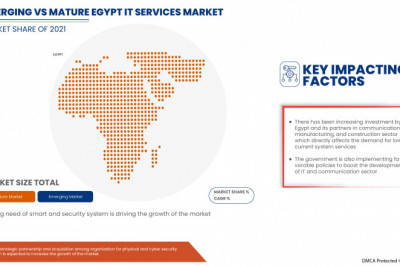views
Cybercriminals are getting bolder, and their phishing schemes are becoming more sophisticated than ever. Recent cybersecurity today reports reveal a disturbing trend: phishing attacks have increased by 75% compared to last year, with hackers targeting everyone from Fortune 500 companies to individual consumers.
What makes this phishing attack news particularly concerning is how convincing these scams have become. Gone are the days of obvious spelling mistakes and poor grammar that once made fraudulent emails easy to spot. Modern phishing attempts use artificial intelligence, detailed personal information, and professional-looking designs that can fool even tech-savvy individuals.
Understanding these evolving threats and learning how to defend against them has never been more critical for protecting your personal information, finances, and digital identity.
The Current State of Phishing Attacks
Phishing attacks now come in multiple forms, each designed to exploit different vulnerabilities. Email phishing remains the most common method, but cybercriminals have expanded their tactics to include SMS phishing (smishing), voice phishing (vishing), and social media-based attacks.
The healthcare sector experienced the highest number of targeted phishing attempts, followed by financial services and retail companies. However, individual consumers aren't immune—personal email accounts face constant bombardment from sophisticated scams designed to steal login credentials, credit card information, and social security numbers.
What's driving this surge? Remote work has created more opportunities for cybercriminals to exploit security gaps. Employees accessing company systems from home often use less secure networks and personal devices, making them easier targets for malicious actors.
How Modern Phishing Attacks Work?
Understanding the anatomy of a phishing attack news helps you recognize and avoid these threats. Most attacks follow a predictable pattern, though the execution has become increasingly sophisticated.
The Initial Contact
Phishing attacks typically begin with an urgent message designed to bypass your critical thinking. Common scenarios include fake security alerts claiming your account has been compromised, delivery notifications for packages you never ordered, or tax-related messages from supposed government agencies.
These messages often create artificial time pressure, urging immediate action to "prevent account closure" or "avoid penalties." This urgency is deliberate—it's designed to make you act before you have time to think critically about the request.
The Hook
Once you engage with the initial message, attackers deploy various tactics to harvest your information. Some direct you to fake websites that perfectly mimic legitimate login pages for banks, social media platforms, or online retailers. Others ask you to download malicious attachments or provide sensitive information directly via email or phone.
Advanced phishing schemes now use personalized information gathered from data breaches or social media profiles. An attacker might reference your actual workplace, recent purchases, or family members to make their scam appear legitimate.
Red Flags to Watch For
Recognizing phishing attempts requires knowing what to look for. Several warning signs consistently appear across different types of attacks.
Generic greetings like "Dear Customer" or "Account Holder" often indicate mass phishing campaigns. Legitimate companies typically use your actual name in communications. Similarly, urgent language demanding immediate action should raise suspicion.
Check sender addresses carefully. Phishing emails often come from addresses that closely resemble legitimate ones but contain subtle misspellings or use different domains. For example, an email might appear to come from "amazon.security@amaz0n.com" instead of the genuine Amazon domain.
Hover over links before clicking to preview the actual destination. Legitimate companies typically use their official domains for important communications, while phishing links often redirect to suspicious websites with random letter combinations or unusual extensions.
Essential Protection Strategies
Protecting yourself from phishing attacks requires both technological tools and behavioral changes. Start by enabling two-factor authentication on all important accounts. Even if criminals steal your password, they won't be able to access accounts protected by multi-factor authentication.
Keep your software updated, including operating systems, browsers, and security applications. These updates often include patches for newly discovered vulnerabilities that cybercriminals exploit in their attacks.
Use reputable antivirus software with real-time email scanning capabilities. Modern security suites can detect and block many phishing attempts before they reach your inbox.
What to Do If You're Targeted?
If you receive a suspicious message, don't panic or respond immediately. Instead, verify the sender's identity through independent channels. If you receive an urgent email claiming to be from your bank, call the bank directly using the phone number on their official website—not any number provided in the suspicious message.
Never provide personal information, passwords, or financial details in response to unsolicited communications. Legitimate organizations don't request sensitive information through email or text messages.
If you accidentally click on a malicious link or provide information to scammers, act quickly. Change passwords for affected accounts, monitor financial statements for unauthorized activity, and consider placing fraud alerts on your credit reports.
Building Long-Term Security Habits
Staying safe from phishing attacks requires developing consistent security practices. Regularly review and update your passwords, using unique combinations for each important account. Password managers can help you maintain strong, unique credentials without the burden of memorizing them all.
Stay informed about current phishing trends and attack methods. Cyber security review awareness training—whether through your employer or online resources—can help you recognize new types of threats as they emerge.
Staying One Step Ahead
The surge in phishing attacks shows no signs of slowing down, but awareness and preparation can significantly reduce your risk of falling victim to these schemes. By understanding how modern phishing attacks work, recognizing common warning signs, and implementing strong security practices, you can protect yourself and your loved ones from cybercriminals.
Remember that cybersecurity is an ongoing process, not a one-time setup. Stay vigilant, keep your defenses updated, and never hesitate to verify suspicious communications through independent channels. Your digital safety depends on the security habits you build today.











